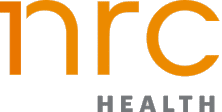As a longtime health care professional, it is hard to imagine a more exciting time in health care. The innovation and pace of change is breathtaking. Before our eyes, our health care system is being deconstructed. As it is reconstructed, aided by technology, the focus of care is shifting from the provider to the person. We have seen this evolution in the financial services sector, the transportation sector, etc. Technology has finally come to health care. That phenomenon will accelerate and educate patients in new ways. With this transition will be new responsibilities placed on those seeking care, new career opportunities for individuals and great leaps forward. This progress will redefine the patient-provider relationship to a partnership founded upon the principles of informed decision making and shared responsibility, guiding principles that are at the core of what the Society for Participatory Medicine stands for.
This profound change will affect all aspects of health care, not the least of which is health and wellness education for the 21st century. The balance of this article presents three inevitable health education trends.
Trend 1: Personal Health Project-Based Learning
Beginning as early as grammar school and continuing through middle school and high school, personal health and wellness project-based learning will be mainstreamed into the classroom curriculum. Project-based learning focuses on presenting authentic, real world problems for kids to solve. Departing from rote memorization and instructional “drills” of an earlier academic era, project-based learning is designed to develop 21st century life skills such as collaboration, critical thinking and communication and integrates a variety of academic disciplines such as math, science, writing, etc.
No one knows more about a person’s health and wellness experience than the person. Yet, today, the most underused resource in health care is the patient (as it was four decades ago when Dr. Warner Slack made this observation). At the same time, kids are inherently interested in their bodies. Beginning at the earliest ages, academics will be infused with opportunities to reinforce personal responsibility for maintaining one’s health and wellness and preventing illness. This is a societal imperative and an opportunity to engage students academically in real world problems of relevance to them. Within a generation, the healthy habits instilled from the recurring personal health project based-learning will be second nature to students everywhere. This will result in many benefits, not the least of which will be healthy habits and life skills that will lower costs, advance care and improve population health.
Trend 2: The Rise of the Certified Health Education Paraprofessional
We are rapidly moving into a world of personalized medicine and super specialization. With this wonderful progress, new career paths will emerge. Certified paraprofessionals specially skilled in patient education will play an essential role in the health care team of the future. These specially trained individuals will support providers and patients. They will offer providers welcome relief from the caregiver burden and enable the provider to fully focus on diagnosis and treatment. They will offer patients specialized training that is tailored to their individual needs as well as time, patience and experience. Together with the patient and provider, certified health education paraprofessionals will be part of a high performing cooperative and collaborative health care team that improves outcomes, reduces medical error, increases satisfaction for all stakeholders and lowers the cost of care.
Trend 3: AI education assistance.
Where possible, we rely on assistive technology to help people in need. That technology can be low tech (a cane), high tech (special purpose eye gazing computers), electronic (an iPad), etc. As spectacular as assistive technology has been in reducing isolation, it will get even better. Incredible and exciting artificial intelligence and machine learning will be put in service to educate and assist patients on all aspects of human health and their individual journeys through the continuum of care. There is a “two-fer” to this 21st century technology. For individuals with deficits, cognitive or otherwise, who are unable to perform certain tasks and functions, “smart” AI assistive products will enable them to engage in activities of daily living and age in place longer than ever before. In addition, individual patient experiences with AI assistive technology can generate data that can be de-identified and aggregated to inform the next generation of AI assistive technology product development enhancement needs. Disability is relative and technology defines disability down. Smart AI assistive technology innovations will be essential parts of our journey to restore health and achieve a health care system of excellence.
The future of health care is indeed bright. For all health care stakeholders – a provider, a payer, an informed patient, a health care technologist, innovator, etc. – one would be hard-pressed to find a more fulfilling vocation or avocation. And technology not only opens new avenues for the individual patient, but for the provider as well, and the whole “team” of individuals bringing knowledge, experience, and practical skills together.
The Society for Participatory Medicine seeks to achieve active involvement of all stakeholders across the continuum of care on all issues relating to an individual’s health. Twenty-first century patient education in all its forms, only three of which are touched on above, is at the core of the Society’s interests and is essential to achieve the health care system that everyone deserves.




